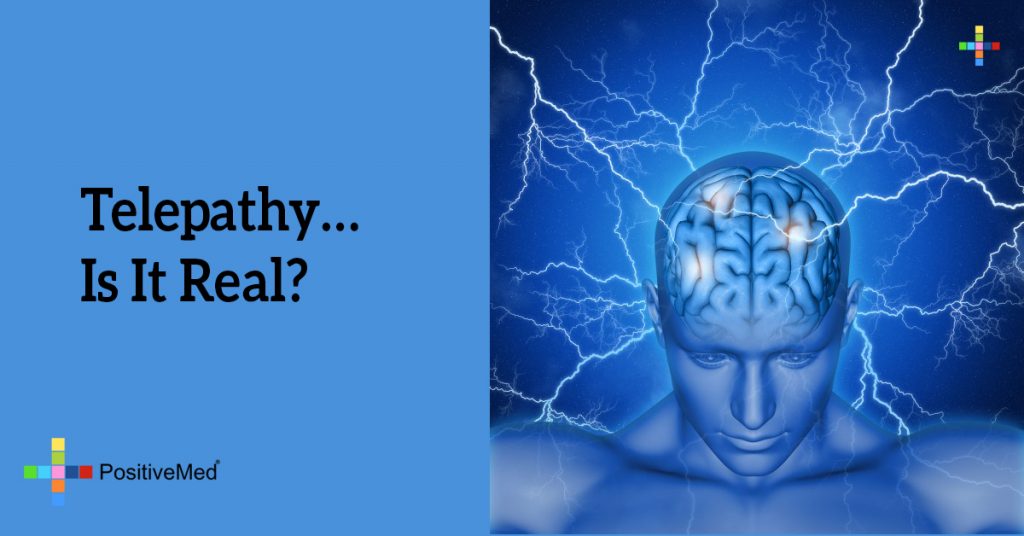
Telepathy… Is It Real?
The psychic phenomena by which communication occurs between minds, or mind-to-mind communication. Such communication includes thoughts, ideas, feelings, sensations and mental images. Telepathic descriptions are universally found in writings and oral lore. In tribal societies such as the Aborigines of Australia telepathy is accepted as a human faculty, while in more advanced societies it is thought a special ability belonging to mystics and psychics. Although not scientifically proven, telepathy is being increasingly studied in psychical research.
History:
“Telepathy” is derived from the Greek terms tele (“distant”) and pathe (“occurrence” or “feeling”). The term was coined in 1882 by the French psychical researcher Fredric W. H. Myers, a founder of the Society for Psychical Research (SPR). Myers thought his term described the phenomenon better than previous used terms such as the French “communication de pensees,” “thought-transference,” and “thought-reading.”
Research interest in telepathy had its beginning in Mesmerism. The magnetists discovered that telepathy was among the so-called “higher-phenomena” observed in magnetized subjects, who read the thoughts of the magnetists and carried out the unspoken instructions.
Soon other psychologists and psychiatrists were observing the same phenomena in their patients. Sigmund Freud noticed it so often that he had to address it. He termed it a regressive, primitive faculty that was lost in the course of evolution, but which still had the ability to manifest itself under certain conditions. Psychiatrist Carl G. Jung thought it more important. He considered it a function of synchronicity.

When the American Society for Psychical Research (ASPR) was founded in 1885, after the SPR in 1884, telepathy became the first psychic phenomenon to be studied scientifically. The first testing was simple: A sender in one room would try to transmit a two-digit number, a taste, or a visual image to a receiver in another room.
Interest in telepathy increased following World War I as thousands of bereaved people turned toward Spiritualism in an attempt to communicate with their dead loved ones. The telepathic parlor game called “willing” became popular. Mass telepathic experiments were undertaken in the United States and Great Britain.

Experimental findings:
Most often telepathy occurs spontaneously in incidents of crisis where a relative or friend has been injured or killed in an accident. An individual is aware of the danger to the other person from a distance. Such information seems to come in different forms as in thought fragments, like something is wrong; in dreams, visions, hallucinations, mental images, in clairaudience, or in words that pop into the mind. Often such information causes the person, the receiver, to change the course of action, such as changing travel plans or daily schedule, or to just call or contact the other person.
Telepathy seems to be related to the individual’s emotional state. This is true of both the sender and receiver. Geriatric telepathy is fairly common, this may be due, it is speculated, to the impairment of the senses with age. Telepathy can be induced in the dream state. It appears to be related to some biological factors: blood volume changes during telepathic sending and electroencephalogram monitoring show that the brain waves of the recipient change to match those of the sender.
Likewise – dissociative drugs adversely affect telepathy, but caffeine has a positive effect on it.
During his 1930 ESP experiments, J. B. Rhine also made some discoveries concerning telepathy: It was often difficult to determine whether information was communicated through telepathy, clairvoyance, or pre-cognitive clairvoyance. He concluded that telepathy and clairvoyance were the same psychic function manifested in different ways. Also, telepathy is not affected by distance or obstacles between the sender and receiver.

Theories:
Although over the centuries various theories have been advanced to describe the functioning of telepathy, none seem to be adequate. Telepathy, like other psychic phenomena, transcends time and space.
Consider this: reality for people who believe in any particular God is different from reality for those who believe that science is sufficient for explaining life and the universe.
In societies where God-centered religions are dominant, that understanding would be the consensus reality, while the religious worldview would remain the non-consensus (or alternative) reality in a predominantly secular society where the consensus reality is grounded in science alone.
In this way, different individuals and communities have fundamentally different world views, with fundamentally different comprehensions of the world around them, and of the constructs within which they live. Thus, a society that is, for example, completely secular and one which believes every eventuality to be subject to metaphysical influence, will have very different consensus realities, and many of their beliefs on broad issues such as science, slavery, and human sacrifice may differ in direct consequence because of the differences in the perceived nature of the world they live in.
In this way, telepathy and other parapsychology is individualized to the people experiencing the phenomenon and thus there is not an exact way to study it, as of yet. There will always be charlatans involving themselves in the studies, there will always be people flaunting any flaw they can find to disprove another person’s reality.
At the end of the day, telepathy, like the other forms of psychic phenomena, is elusive and difficult to test systematically. Enough evidence is available to reasonably substantiate the phenomenon does exist, but quantifying it seems to be another matter entirely. The phenomenon is closely connect to the emotional states on both the sender and receiver which creates difficulty in replicating experimental results. Attitudinal factors also influence the phenomenon. The best that researchers can hope for is to have supportive and receptive subjects in experiments that produce similar results.
Telepathy is Easier Than You Think – Michio Kaku, YouTube
Telepathy, Spirit Home
Telepathy, Psychology Wiki
J. B. Rhine, Parapsychology (dot) Org





